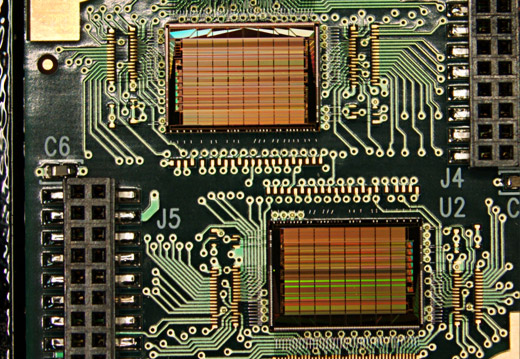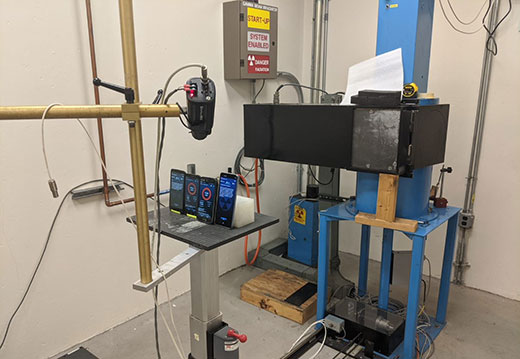Radiation Detection and Emerging Safeguards Technologies

Low-power high channel density ASICs for CdZnTe imaging detector readout.

Prototype of CdZnTe gamma camera for SPECT imaging.

Radiation detector test at the BNL Calibration Facility. The Gamma Beam Irradiator provides dose rates up to 10,000 R/hr.
The Radiation Detection and Emerging Safeguards Technologies Group develops radiation detection technologies and applications in security, health physics and healthcare. The group maintains expertise in modeling and simulation, conceptual design and engineering development, test and evaluation, and field deployment of various radiation detection systems. The group provides scientific and engineering support to the Department of Homeland Security, particularly its Countering Weapons of Mass Destruction Office (CWMD), and the Department of Energy’s National Nuclear Security Administration (NNSA). In addition, the group explores emerging technologies to enhance radiation measurements, nuclear security, and safeguards.
Activities and Programs
- Conduct modeling and simulation to prove concepts and validate system designs in radiation detection applications.
- Design, construct and test radiation detection systems for safeguards, security, safety, health physics and healthcare applications.
- Conduct research in data analytics and develop algorithms for radiation detection and characterization.
- Develop software and data analysis tools incorporating machine learning and artificial intelligence elements for international nuclear safeguards and nuclear security.
- Explore emerging technologies, e.g., artificial intelligence and machine learning, for radiation detection, nuclear safeguards, and physical security.
- Evaluate and develop innovative technologies for next generation nuclear safeguards, e.g., NDA technologies, containment, and surveillance.
- Participate in equipment and instrumentation testing campaigns conducted by federal sponsors. Participation includes test planning, test execution, data validation and verification (V&V), data analysis, and report reviews.
- Preserve nuclear verification capabilities within the DOE network for the National Nuclear Security Administration’s Office of Nuclear Compliance Verification.
- Matrix support to: NN department programs: Radiological Assistance program, APEX Inspector training, NNSS training; Instrumentation Department detector materials development initiatives; Computational Science Initiatives; and Facility and Operations Laboratory Protection Division Classification Office.

Machine learning algorithm helps identify objects of interest in surveillance videos.

Impala test of bomb-sniffing robots equipped with radiation detectors. This is a functional test photo verifying the ability to move a 50-pound object.
-
-
Giuseppe Camarda
(631) 344-2726, giuseppec@bnl.gov
-
-
Odera Dim
(631) 344-7286, dodera@bnl.gov
-
Charles Finfrock
(631) 344-4018, finfrock@bnl.gov
-
-
-
There are no people to show.




